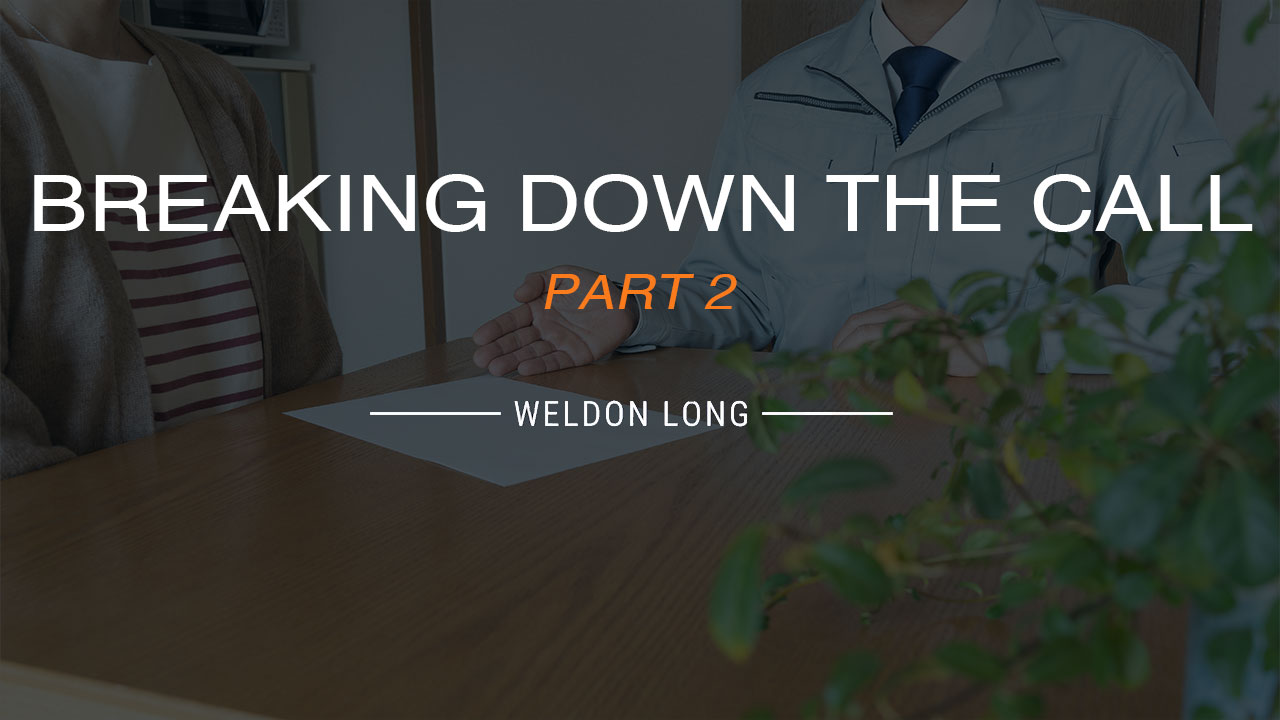Breaking Down the Call – Part 2
June 27, 2024
Step 1 Overview
Last time we spoke about the time commitment. That means both the availability of the homeowners at the end of your work AND the time needed to do your job fully. If you’re getting shorted on either of those, you’ll find your closing rate sinking faster than the temperatures during a Colorado Christmas.
If the homeowner has to be somewhere else before you’re done, that means you’ll be asked to wrap it up quickly after you’ve already begun, and the ability to show the value of your recommendations will be gone. It is extremely likely that you’ll be asked to wrap it up and drop off a quote. That’s a bit like judging a chef on his meal when he’s only halfway done cooking it. It will leave a bad taste in everyone’s mouth.
There are proven methods in sales. I’m talking about the fundamentals that work across different industries and different products/services. One of those basic methods has proven that sales are more likely to happen when you’ve convinced the consumer that you’re not a commodity, that your product isn’t identical to everyone else’s. So how is that done?
That’s done through Marketing and it’s done through the demo. Cabbage Patch dolls aren’t really BETTER than other dolls; they were just successfully marketed that way. And your product or service isn’t really better than your competitors in the mind of the homeowner – UNTIL you have the time and opportunity to show why it really is. You can’t really marry someone until you take the opportunity to ask them out on a date first. That just doesn’t make sense, right?
So we can see that time is everything. But the funny thing about sales is that you get paid for the last few minutes of a call. The first hour you get your hourly pay. How many people want to live off hourly? It doesn’t really work. We have to focus on those commissions. It’s those last few minutes where you get a yes or no. So you need time to do your work and time from the homeowner to sit down and discuss your findings.
Step 2
And those commissions are only going to come if you’ve been given time and attention to make your recommendations, which is Step 2.
Remember to set this step up early in your conversation, right after you receive the green light from the homeowner to spend the necessary time doing your job and sitting with them when you’re done. It may sound something like this:
Tech: Now, Mr. and Mrs. Homeowner, when I look around a home, it’s very common that I find additional issues — other preventative repairs, indoor air quality issues, code issues, safety issues, efficiency issues. If I find something, should I bring it to your attention, or should I just keep that information to myself?
Homeowner: If you find something, I’d rather know about it, yes.
Now I have permission to do what? An hour later at the end, I will remind them.
Tech: Mrs. Homeowner, you said to let you know if I found any other additional issues. It turns out I did locate something. Is there a place we could sit down and chat?
We’re not going to talk about Step 3 right now. Again, we’re just talking about laying the foundation. The foundation is getting the time commitment and getting permission from your homeowners to offer additional solutions. Laying out the welcome mat, so to speak.
I understand that most of the time when you walk into a home, the homeowners are not too enthusiastic about spending more money. But if you get permission from them to bring additional problems to their attention, then that should prepare them for a talk at the end, even if you found no additional issues outside of the reason for your visit (it may be a repair). But either way, there will be a talk that will take place because you’ve secured their permission.
Next time, we’ll cover Step 3, which deals with building the relationship throughout your time there to make your job easier during the sit-down. Have a great week!


